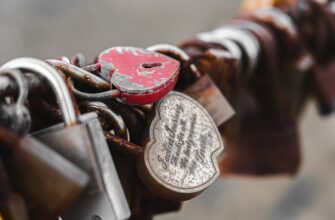- What is an Air-Gapped Crypto Wallet?
- Why Air-Gapped Security is Non-Negotiable
- Air-Gapped Wallet Protection: 7 Essential Best Practices
- Critical Mistakes to Avoid with Air-Gapped Wallets
- Air-Gapped Wallet FAQ
- Are air-gapped wallets completely hack-proof?
- Which wallets support true air-gapped functionality?
- How often should I access my air-gapped wallet?
- Can I recover funds if my air-gapped device fails?
- Is Bluetooth safe for air-gapped transactions?
- Do air-gapped wallets work with all cryptocurrencies?
What is an Air-Gapped Crypto Wallet?
An air-gapped crypto wallet is a storage method completely isolated from internet-connected devices. Unlike hot wallets (software-based) or hardware wallets (USB-connected), air-gapped wallets operate offline at all times, typically using QR codes, SD cards, or Bluetooth in one-way communication modes. This physical separation creates an impenetrable barrier against remote hacking attempts, malware, and phishing attacks – making it the gold standard for securing high-value cryptocurrency holdings.
Why Air-Gapped Security is Non-Negotiable
With crypto thefts exceeding $3.8 billion in 2022 (Chainalysis report), air-gapping eliminates the most common attack vectors:
- Zero online exposure: No internet connection means hackers can’t remotely access keys
- Malware immunity: Offline devices can’t be infected by keyloggers or screen scrapers
- Physical breach requirement: Attackers need direct access to compromise assets
- Reduced human error: Limits accidental exposure during transactions
Air-Gapped Wallet Protection: 7 Essential Best Practices
- Use Dedicated Offline Devices
Designate a brand-new device (tablet/laptop) solely for wallet operations. Never connect it to Wi-Fi, cellular networks, or USB ports except for controlled data transfer. Factory reset before use and disable all wireless capabilities. - Implement Multi-Signature Authentication
Require 2-3 physical approvals for transactions. Distribute signing devices geographically (e.g., home safe + bank vault) to prevent single-point compromise. - Secure Physical Storage Protocols
Store devices in tamper-evident safes with environmental controls. Use fireproof/waterproof containers and consider safe deposit boxes. Maintain separation from seed phrase backups. - QR Code Transaction Signing Only
Never use USB connections. Sign transactions by scanning QR codes from an online device, then broadcast via that connected device. Verify addresses on both screens. - Regular Offline Software Updates
Update wallet software quarterly via downloaded files on clean USB drives. Scan for malware on a separate computer before transferring to air-gapped devices. - Redundant Encrypted Backups
Create encrypted backups of wallet data on multiple SD cards/USB drives. Store in geographically dispersed locations using steel plates for seed phrases (e.g., Cryptosteel). - Controlled Access & OpSec
Limit knowledge of wallet existence to essential parties. Use biometric locks on devices, security cameras for storage areas, and never discuss holdings publicly.
Critical Mistakes to Avoid with Air-Gapped Wallets
- Using previously online devices without full drive wiping
- Storing seed phrases digitally (even on encrypted drives)
- Connecting signing devices to charge via public USB ports
- Neglecting electromagnetic shielding (Faraday bags prevent data leakage)
- Using Bluetooth pairing instead of one-way communication
Air-Gapped Wallet FAQ
Are air-gapped wallets completely hack-proof?
While significantly more secure than online options, physical theft or sophisticated attacks (like supply chain compromises) remain possible. Layered security practices mitigate these risks.
Which wallets support true air-gapped functionality?
Coldcard Mk4, Keystone Pro, and Passport Bitcoin Wallet lead the market with QR-based signing. Avoid “offline” wallets requiring USB connections.
How often should I access my air-gapped wallet?
Limit interactions to essential transactions. Quarterly checks for software updates are sufficient for long-term holdings. Each access increases exposure risk.
Can I recover funds if my air-gapped device fails?
Yes – provided you have multiple encrypted backups of seed phrases and wallet files. Test recovery annually using small transactions.
Is Bluetooth safe for air-gapped transactions?
Only if implemented in one-directional mode (device transmits data but can’t receive). Most experts prefer QR codes for absolute isolation.
Do air-gapped wallets work with all cryptocurrencies?
Most support Bitcoin, Ethereum, and major ERC-20 tokens. Verify compatibility before transferring assets, especially for newer altcoins.
Implementing these air-gapped best practices creates a formidable defense for your digital assets. Remember: In crypto security, inconvenience is the price of invulnerability. Treat your air-gapped setup like a bank vault – because that’s exactly what it is.








